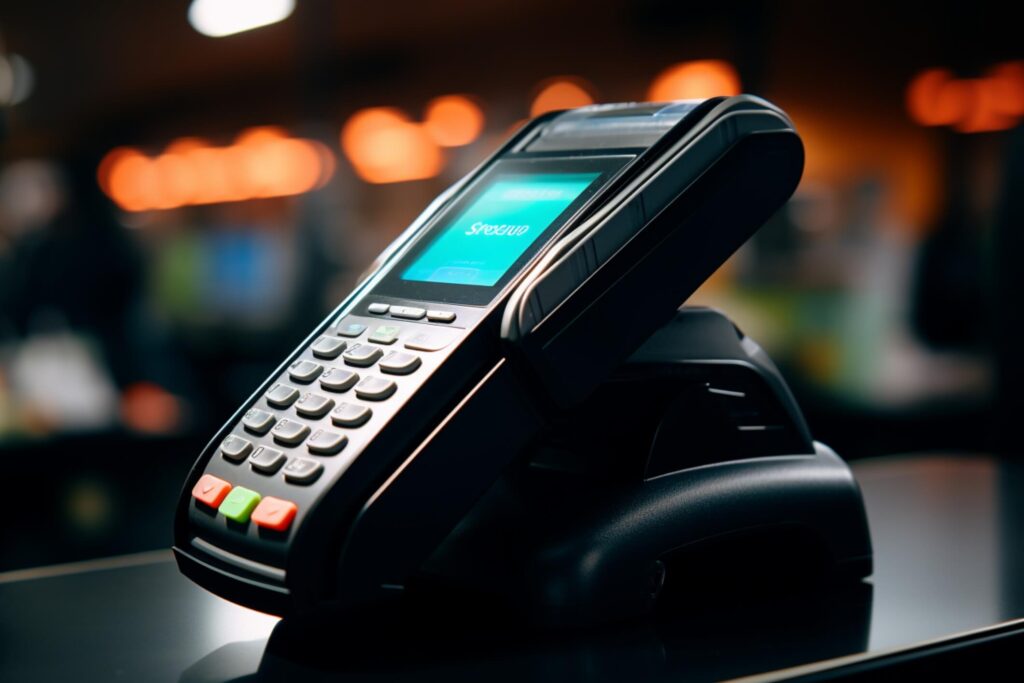
By American March 27, 2024
In today’s fast-paced business landscape, having a reliable and efficient Point of Sale (POS) system is crucial for the success of any business. A POS system not only helps streamline operations but also plays a vital role in enhancing customer experience and boosting sales. However, to truly maximize the potential of your POS system, it is essential to understand its importance, choose the right system, integrate it with other business tools, and utilize its features effectively. In this article, we will explore various tips and tricks to help you optimize your POS system for optimal efficiency and profitability.
Understanding the Importance of a POS System in Today’s Business Landscape
A POS system is no longer just a cash register; it has evolved into a comprehensive tool that enables businesses to manage sales, inventory, customer data, and more. With the rise of e-commerce and the increasing demand for seamless transactions, a POS system has become a necessity for businesses of all sizes. It not only simplifies the checkout process but also provides valuable insights into customer behavior and preferences. By leveraging these insights, businesses can make informed decisions and tailor their offerings to meet customer demands, ultimately leading to increased profitability.
Choosing the Right POS System for Your Business: Key Considerations
Selecting the right POS system for your business is crucial as it can significantly impact your operations and overall success. When choosing a POS system, there are several key considerations to keep in mind:
1. Evaluating Your Business Needs: Identifying the Features and Functionality You Require
Before diving into the market, it is essential to evaluate your business needs and identify the specific features and functionality you require from a POS system. Consider factors such as the size of your business, the nature of your products or services, and any unique requirements you may have. This evaluation will help you narrow down your options and choose a system that aligns with your business goals.
2. Exploring the Latest Trends in POS Systems: What’s New in 2024?
The world of POS systems is constantly evolving, with new trends and technologies emerging each year. In 2024, some of the latest trends in POS systems include cloud-based solutions, mobile payment integration, and AI-powered analytics. Cloud-based systems offer scalability and flexibility, allowing businesses to access their data from anywhere at any time. Mobile payment integration enables seamless transactions and enhances the customer experience. AI-powered analytics provide valuable insights into customer behavior, enabling businesses to make data-driven decisions. Keeping up with these trends can give your business a competitive edge and ensure you choose a system that is future-proof.
3. Integrating Your POS System with Other Business Tools: Streamlining Operations
To maximize efficiency, it is crucial to integrate your POS system with other business tools such as accounting software, inventory management systems, and customer relationship management (CRM) software. Integration allows for seamless data flow between different systems, eliminating the need for manual data entry and reducing the chances of errors. It also enables real-time reporting and analysis, providing you with a holistic view of your business operations.
4. Enhancing Customer Experience with a Well-Optimized POS System
A well-optimized POS system can significantly enhance the customer experience, leading to increased customer satisfaction and loyalty. Some key features to consider for improving customer experience include:
- Quick and seamless checkout process: A POS system should enable fast and efficient transactions, minimizing wait times for customers.
- Multiple payment options: Offering a variety of payment options, such as credit cards, mobile payments, and digital wallets, gives customers flexibility and convenience.
- Loyalty programs and rewards: Integrating loyalty programs into your POS system allows you to track customer purchases, offer personalized rewards, and build long-term customer relationships.
- Customer data collection: A POS system can capture valuable customer data, such as purchase history and preferences, enabling you to personalize marketing campaigns and provide targeted offers.
By optimizing these features, you can create a positive and memorable shopping experience for your customers, ultimately driving repeat business and word-of-mouth referrals.
5. Boosting Sales and Revenue: Leveraging Data Analytics from Your POS System
One of the most significant advantages of a POS system is its ability to provide valuable data analytics. By analyzing sales data, customer behavior, and inventory trends, businesses can identify opportunities for growth and make data-driven decisions. Some key data analytics that you can expect from your POS system include:
- Sales reports: POS systems generate detailed sales reports, allowing you to track sales performance, identify top-selling products, and analyze sales trends over time.
- Customer insights: POS systems capture customer data, enabling you to understand customer preferences, buying patterns, and demographics. This information can be used to tailor marketing campaigns and promotions.
- Inventory management: POS systems provide real-time inventory tracking, helping you optimize stock levels, reduce out-of-stock situations, and avoid overstocking.
- Pricing and promotions: By analyzing sales data, you can identify pricing and promotional strategies that drive sales and maximize revenue.
By leveraging these data analytics, businesses can make informed decisions, optimize their sales strategies, and ultimately increase their bottom line.
6. Inventory Management Made Easy: Utilizing Your POS System’s Inventory Tracking Features
Effective inventory management is crucial for any business, as it directly impacts customer satisfaction, cash flow, and profitability. A well-optimized POS system can simplify inventory management by providing real-time tracking, automated reordering, and accurate stock counts. Here are some ways to utilize your POS system’s inventory tracking features:
- Real-time inventory tracking: A POS system with real-time inventory tracking allows you to monitor stock levels accurately. This helps prevent stockouts and overstocking, ensuring that you always have the right products available for your customers.
- Automated reordering: By setting up automated reordering rules in your POS system, you can streamline the replenishment process. When stock levels reach a certain threshold, the system can automatically generate purchase orders or alerts, saving time and reducing the chances of manual errors.
- Barcode scanning: Barcode scanning capabilities in a POS system enable quick and accurate inventory management. By scanning barcodes during the sales process, the system automatically updates stock levels, eliminating the need for manual data entry.
- Product categorization and tagging: Organizing your products into categories and adding tags in your POS system makes it easier to track and manage inventory. This allows you to quickly locate products, analyze sales by category, and identify top-selling items.
By utilizing these inventory tracking features, businesses can optimize their stock levels, reduce carrying costs, and ensure a seamless shopping experience for customers.
Maximizing Efficiency with Employee Management Tools in Your POS System
Efficient employee management is essential for smooth operations and exceptional customer service. A well-optimized POS system can help streamline employee management tasks, such as scheduling, time tracking, and performance evaluation. Here are some employee management tools to consider in a POS system:
- Employee scheduling: A POS system with built-in scheduling capabilities allows you to create and manage employee schedules efficiently. You can easily assign shifts, track employee availability, and make schedule adjustments as needed.
- Time tracking and attendance: POS systems can track employee clock-ins and clock-outs, eliminating the need for manual time cards or punch clocks. This ensures accurate payroll calculations and helps prevent time theft or buddy punching.
- Performance evaluation: Some POS systems offer performance evaluation tools, allowing you to track employee sales performance, customer satisfaction ratings, and other key metrics. This data can be used for performance reviews, incentive programs, and training opportunities.
- Training and onboarding: POS systems can also facilitate employee training and onboarding by providing access to training materials, product information, and standard operating procedures. This ensures that employees are well-equipped to provide excellent customer service.
By utilizing these employee management tools, businesses can optimize their workforce, improve productivity, and deliver exceptional customer experiences.
Securing Your POS System: Best Practices for Data Protection and Fraud Prevention
Securing your POS system is of utmost importance to protect sensitive customer data and prevent fraud. Here are some best practices to ensure the security of your POS system:
- Use secure hardware and software: Invest in reputable POS hardware and software that offer robust security features. Ensure that your system is PCI-DSS compliant, which is the industry standard for secure payment processing.
- Implement strong passwords and user access controls: Set up strong passwords for your POS system and regularly update them. Implement user access controls to restrict access to sensitive functions and data, ensuring that only authorized personnel can make changes or access customer information.
- Regularly update and patch your POS system: Keep your POS system up to date with the latest software patches and security updates. Regularly check for updates from your POS provider and apply them promptly to protect against known vulnerabilities.
- Educate employees on security best practices: Train your employees on security best practices, such as not sharing passwords, being vigilant against phishing attempts, and reporting any suspicious activities. Regularly remind them of the importance of data protection and fraud prevention.
- Monitor and analyze system logs: Regularly review system logs and transaction records to detect any unusual activities or discrepancies. Implement real-time monitoring tools that can alert you to potential security breaches or anomalies.
Conclusion
A well-optimized POS system can be a game-changer for businesses, enabling them to streamline operations, enhance customer experience, and boost profitability. By understanding the importance of a POS system, choosing the right system, integrating it with other business tools, and utilizing its features effectively, businesses can unlock the full potential of their POS system. From inventory management to employee management, data analytics to data security, every aspect of a POS system plays a crucial role in maximizing efficiency and profitability. By implementing the tips and tricks discussed in this article, businesses can take their operations to new heights and stay ahead in today’s competitive business landscape.



